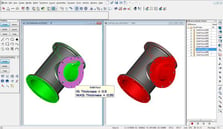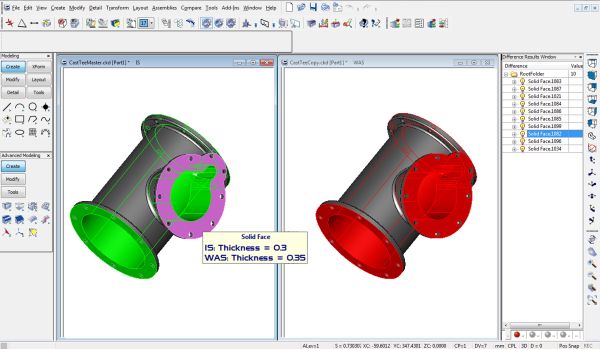As I reflect on the people we met at IMTS a little over a week ago. I am amazed at the number of job shops and smaller manufactures that struggle needlessly with problems of CAD interoperability, spending excessive amounts of money supporting multiple CAD and CAM systems that could be easily solved by incorporating Direct CAD into their workflow. This blog is dedicated to helping to educate and and make our manufacturers more efficient and competitive by incorporating Direct CAD technology throughout their workflow.
How often has a client brought in a CAD design in a format that was incompatible with your current CAD system?

How will your shop service the client? If an issue related to manufacturability of the model is spotted at the shop, how easily can the design be changed? With Direct CAD, these issues become a thing of the past. CAD format issues can be accommodated, as can design changes.
Traditional CAD is complex with a steep learning curve. Moreover, traditional CAD designs cannot be shared easily in the supply chain if everyone is using different CAD software, which adds further complication to incompatibility issues. And editing the files can be problematic, if not entirely impossible. Traditional parametric, and even blended CAD systems, require staff to be dedicated to running only a single CAD program because in order to be used effectivily, these complex systems require intense training, requiring lots of time and money.
Professional CAD systems can also be very expensive to purchase and maintain (besides the training required). Many shops still run multiple programs in order to ensure interoperability with the majority of their customers. And each of these system requires maintenance to stay current, running upwards of $1,000 per license per year or more. With new updates comes new features, and again, constant training is required training to ensure shop personnel are current on the latest features and know-how.
Quoting a project based off a CAD file can be time consuming and expensive as the shop must ensure the operator is thoroughly trained on whatever system was used originally. With a Direct CAD system, quoting can be accomplished by a non-CAD trained person who is able to open, analyze, and quote the job for the client without having to rely on highly paid and busy CAD jockey to manipulate and analyze the file. By reducing the need to translate or re-draw, shops can significantly lower their costs, charge less, and ultimately ensure client retention.
By utilizing direct CAD modeling in the shop, true collaboration and modification can take place without the need to re-draw the project from scratch. Direct CAD modeling allows designs to be shared, opened, and edited as though everyone was using the same system. Direct CAD modeling brings the design process to the individual. Designs can be modified and improved by anyone without the need to send the project back to the original designer.
Further benefits for many manufacturers is that Direct CAD can be used to prepare any CAD models for machining and for analysis. This simplification allows the shop to prepare work instructions, design tooling and make changes to designs easily and quickly giving them a competitive advantage over manufacturers without this capability.
As the auto industry in North America rebounds, manufacturers struggle to keep up with the demands of increased production. And until open positions can be filling, having the proper tools to increase efficiency and reduce costs are essential to a manufacturers success. Those tools now include Direct CAD technology within the manufacturers workflow.
What interoperability and design incompatibility do you face on a day-to-day basis? How does training, or lack thereof, affect your workflow?

